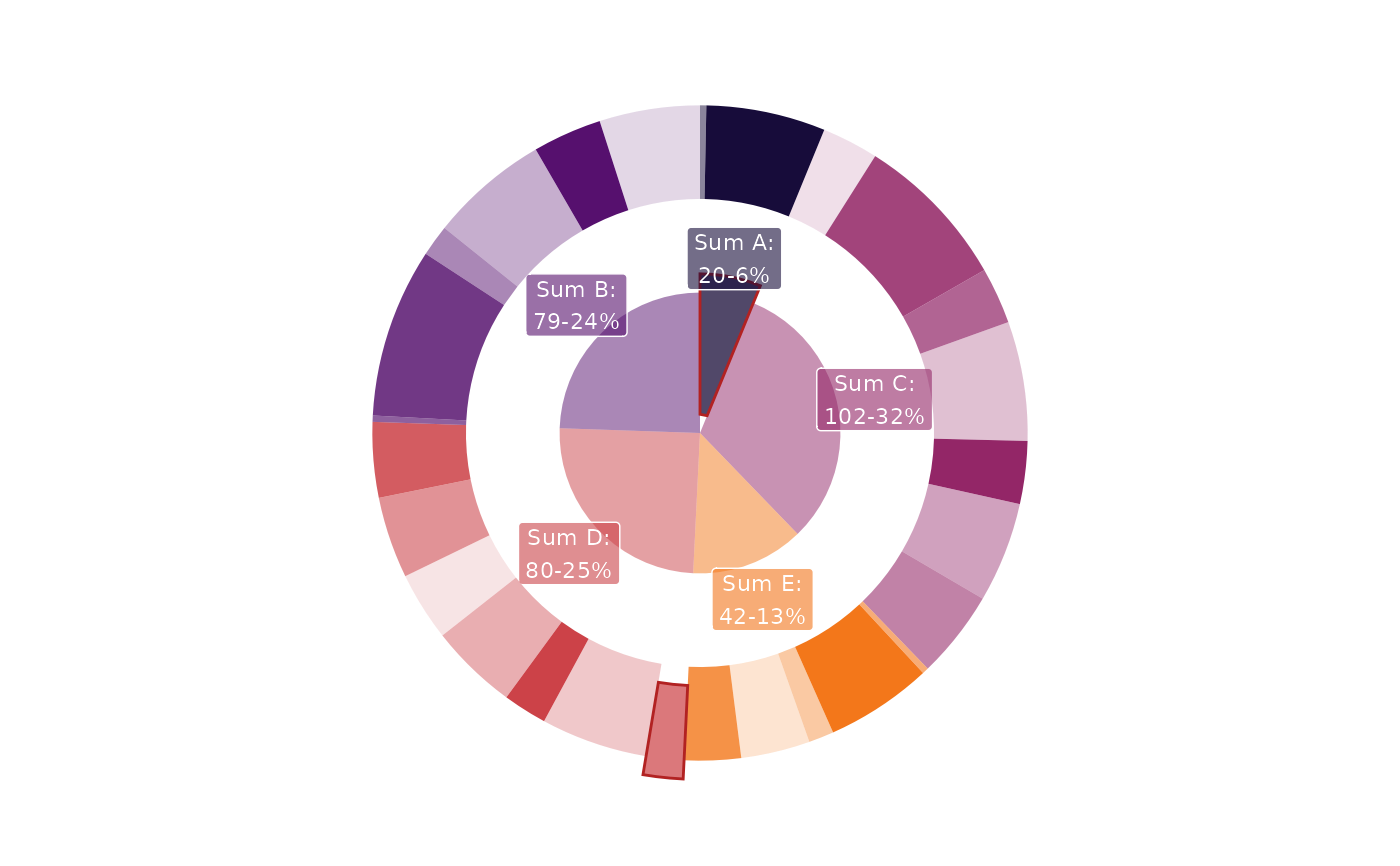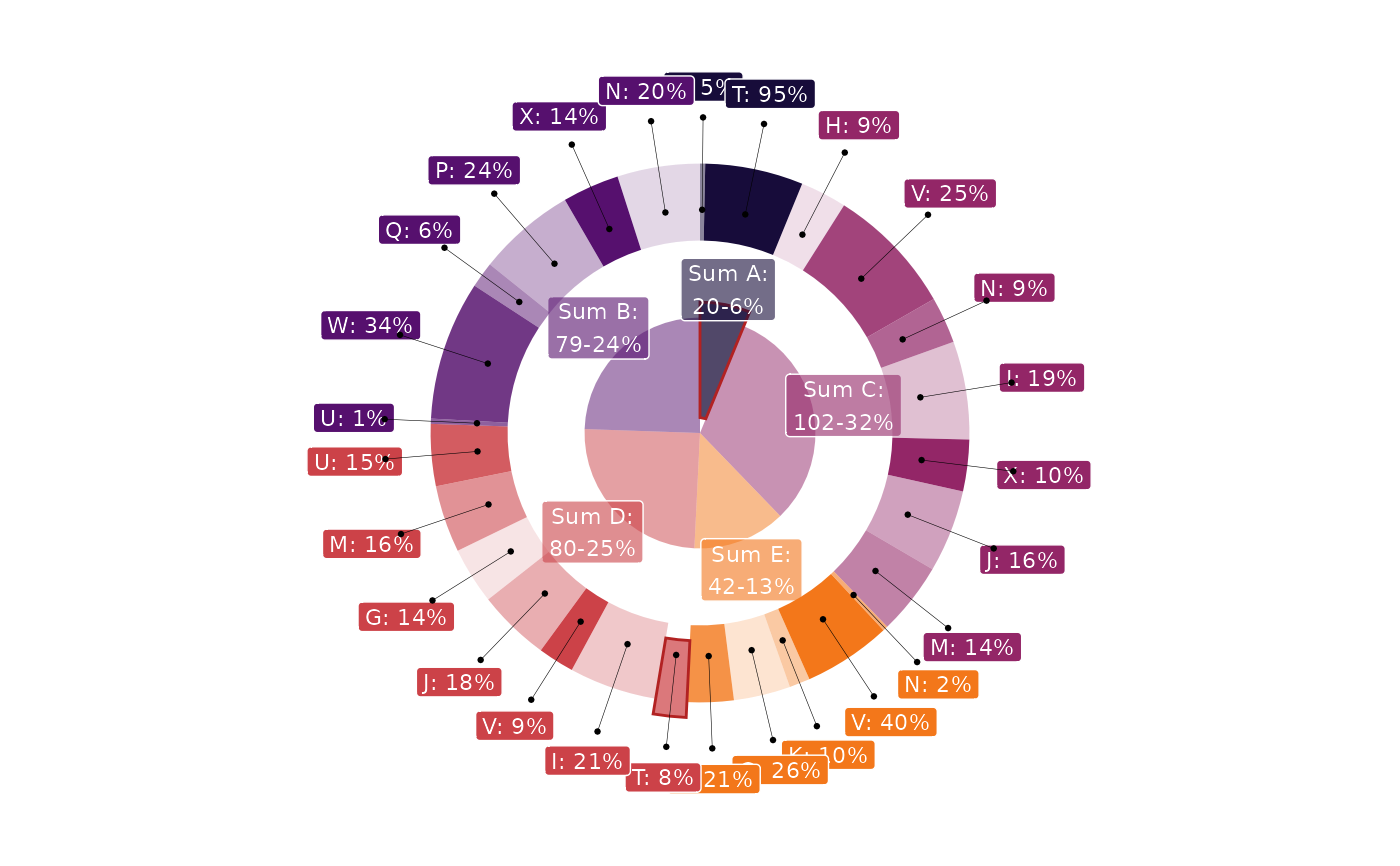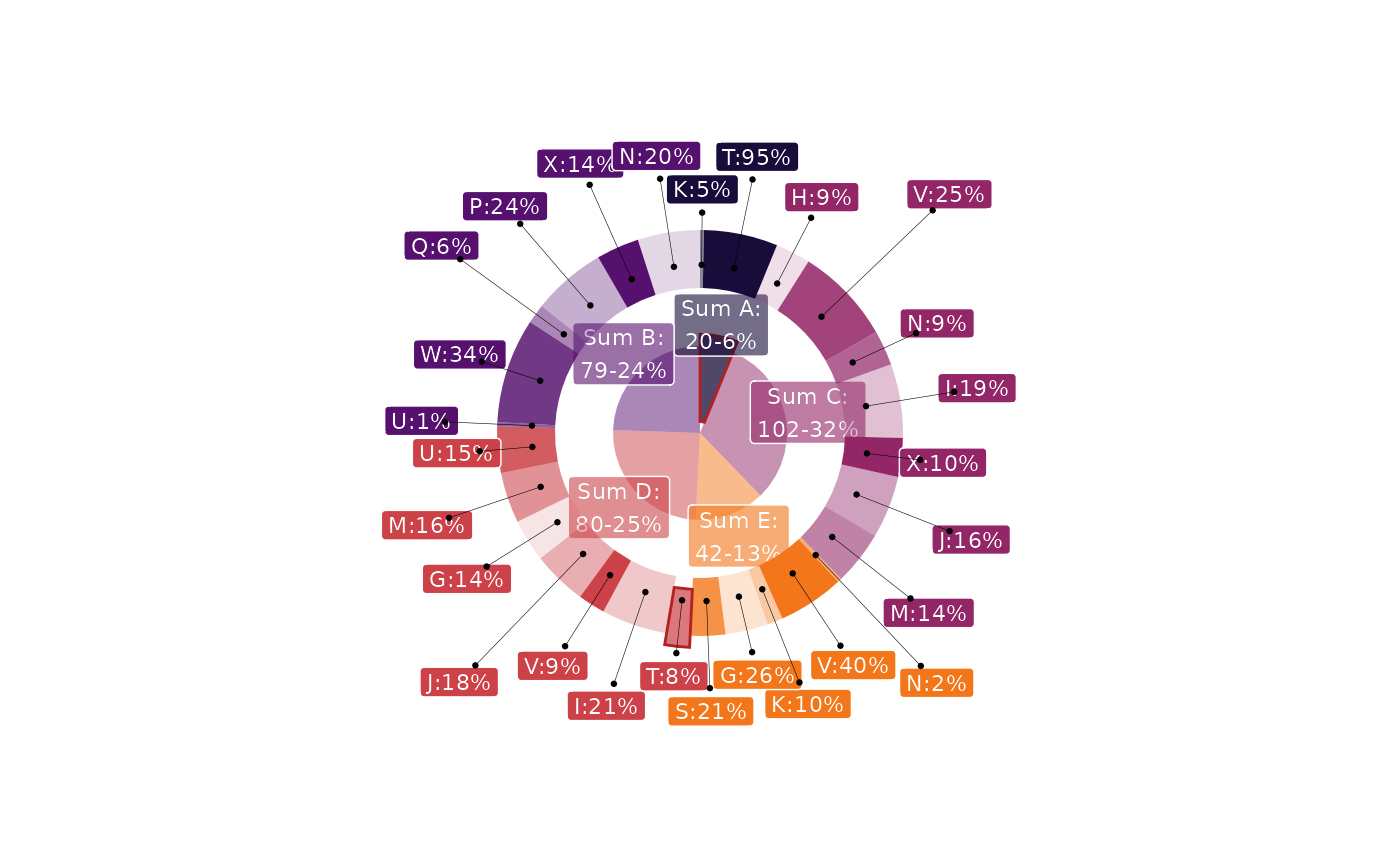The set of functions served to connect text or labels with donut segments
geom_pin_line()- builds curved line to linl label with donut segmentgeom_pin_head()- builds stylish point heads for pinsgeom_pin()- handy wrapper forgeom_pin_line()andgeom_pin_head()
Usage
geom_pin_line(
mapping = NULL,
data = NULL,
stat = "pin",
position = "identity",
na.rm = FALSE,
show.legend = NA,
inherit.aes = TRUE,
r = 1.5,
cut = 0.1,
layout = circle(),
...
)
geom_pin_head(
mapping = NULL,
data = NULL,
stat = "point",
position = "identity",
na.rm = FALSE,
show.legend = NA,
inherit.aes = TRUE,
r = 1.5,
cut = 0.1,
layout = circle(),
...
)
geom_pin(..., head = TRUE)Format
An object of class StatPinLine (inherits from Stat, ggproto, gg) of length 3.
An object of class StatPinHead (inherits from Stat, ggproto, gg) of length 3.
Arguments
- mapping
Set of aesthetic mappings created by
aes(). If specified andinherit.aes = TRUE(the default), it is combined with the default mapping at the top level of the plot. You must supplymappingif there is no plot mapping.- data
The data to be displayed in this layer. There are three options:
If
NULL, the default, the data is inherited from the plot data as specified in the call toggplot().A
data.frame, or other object, will override the plot data. All objects will be fortified to produce a data frame. Seefortify()for which variables will be created.A
functionwill be called with a single argument, the plot data. The return value must be adata.frame, and will be used as the layer data. Afunctioncan be created from aformula(e.g.~ head(.x, 10)).- stat
The statistical transformation to use on the data for this layer, either as a
ggprotoGeomsubclass or as a string naming the stat stripped of thestat_prefix (e.g."count"rather than"stat_count")- position
Position adjustment, either as a string naming the adjustment (e.g.
"jitter"to useposition_jitter), or the result of a call to a position adjustment function. Use the latter if you need to change the settings of the adjustment.- na.rm
If
FALSE, the default, missing values are removed with a warning. IfTRUE, missing values are silently removed.- show.legend
logical. Should this layer be included in the legends?
NA, the default, includes if any aesthetics are mapped.FALSEnever includes, andTRUEalways includes. It can also be a named logical vector to finely select the aesthetics to display.- inherit.aes
If
FALSE, overrides the default aesthetics, rather than combining with them. This is most useful for helper functions that define both data and aesthetics and shouldn't inherit behaviour from the default plot specification, e.g.borders().- r
The radius where donut is placed
- cut
Sets additional two-sided gap for pins
- layout
The layout function to effectively display text and labels. Obviously it's better to have the same as for
geom_label_extorgeom_text_ext- ...
Parameters to be passed to
geom_pin_line()andgeom_pin_head()- head
Boolean - defines whether to add pin head
Examples
n <- 30
set.seed(2021)
df <- dplyr::tibble(
lvl1 = sample(LETTERS[1:5], n, TRUE),
lvl2 = sample(LETTERS[6:24], n, TRUE),
value = sample(1:20, n, TRUE),
highlight_ext = sample(c(FALSE,TRUE), n, TRUE, c(.9, .1))) |>
dplyr::mutate(highlight_int = dplyr::if_else(lvl1 == "A", TRUE, FALSE))
# Starting plot with doubled donuts and annotations for internal one
p <- dplyr::group_by(df, lvl1, lvl2, highlight_ext, highlight_int) |>
dplyr::summarise(value = sum(value), .groups = "drop") |>
packing(value, lvl1) |>
ggplot(aes(value = value, fill = lvl1)) +
geom_donut_int(aes(highlight = highlight_int), alpha=.5, r_int = .25) +
geom_label_int(aes(label = "Sum {fill}:\n{.sum}-{scales::percent(.prc)}"),
alpha = .6, col = "white", size = 3, r=1.2) +
geom_donut_ext(aes(opacity = lvl2, highlight = highlight_ext)) +
scale_fill_viridis_d(option = "inferno", begin = .1, end = .7) +
guides(alpha = guide_legend(ncol = 2), fill = guide_legend(ncol = 2)) +
theme_void() +
theme(legend.position = "none")
p + coord_radial(theta = "y", expand = FALSE, rotate_angle = FALSE)
 # Add labels to external donut as percent inside group
p + coord_radial(theta = "y", expand = FALSE, rotate_angle = FALSE) +
geom_label_ext(aes(label = paste0(lvl2, ": {scales::percent(.prc_grp)}")),
show.legend = FALSE, size=3, col="white") +
geom_pin(size = .5, linewidth=.1, show.legend = FALSE, cut = .2)
# Add labels to external donut as percent inside group
p + coord_radial(theta = "y", expand = FALSE, rotate_angle = FALSE) +
geom_label_ext(aes(label = paste0(lvl2, ": {scales::percent(.prc_grp)}")),
show.legend = FALSE, size=3, col="white") +
geom_pin(size = .5, linewidth=.1, show.legend = FALSE, cut = .2)
 # Leverage tv() layout
p + coord_radial(theta = "y", expand = FALSE, rotate_angle = FALSE) +
geom_label_ext(aes(label = paste0(lvl2, ":{scales::percent(.prc_grp)}")),
show.legend = FALSE, size=3, col="white",
layout = tv(thinner = TRUE, thinner_gap = .15)) +
geom_pin(size = .5, linewidth=.1, show.legend = FALSE, cut = .2,
layout = tv(thinner = TRUE, thinner_gap = .15))
# Leverage tv() layout
p + coord_radial(theta = "y", expand = FALSE, rotate_angle = FALSE) +
geom_label_ext(aes(label = paste0(lvl2, ":{scales::percent(.prc_grp)}")),
show.legend = FALSE, size=3, col="white",
layout = tv(thinner = TRUE, thinner_gap = .15)) +
geom_pin(size = .5, linewidth=.1, show.legend = FALSE, cut = .2,
layout = tv(thinner = TRUE, thinner_gap = .15))
 # Leverage another layout
p + coord_radial(theta = "y", expand = FALSE, rotate_angle = FALSE) +
geom_label_ext(aes(label = paste0(lvl2, ": {scales::percent(.prc_grp)}")),
show.legend = FALSE, size=3, col="white", layout = eye()) +
geom_pin(size = .5, linewidth=.1, show.legend = FALSE, layout = eye())
# Leverage another layout
p + coord_radial(theta = "y", expand = FALSE, rotate_angle = FALSE) +
geom_label_ext(aes(label = paste0(lvl2, ": {scales::percent(.prc_grp)}")),
show.legend = FALSE, size=3, col="white", layout = eye()) +
geom_pin(size = .5, linewidth=.1, show.legend = FALSE, layout = eye())

